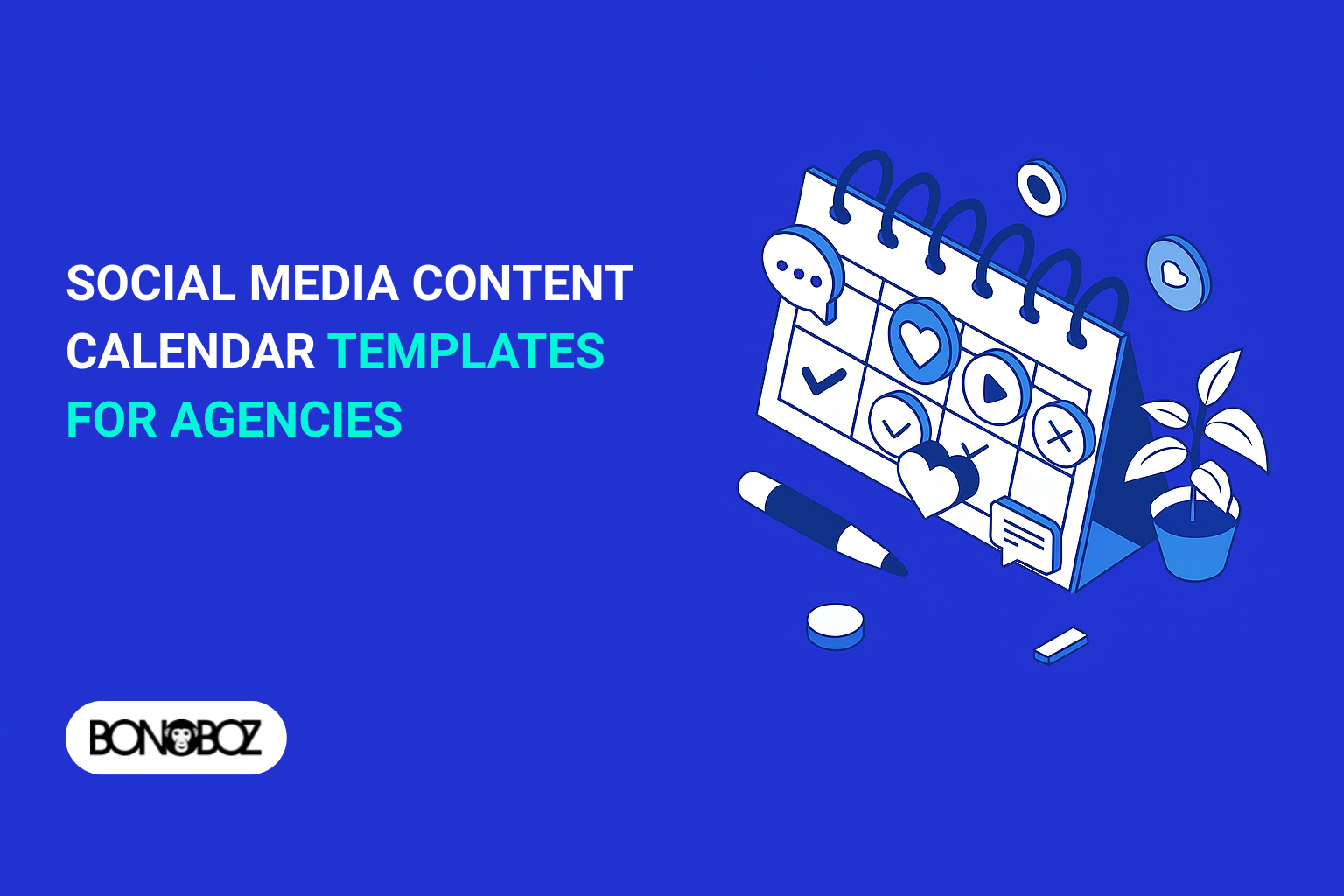Are social media content calendars all about filling in the blocks on an Excel Sheet? Does one brand from the real estate industry have the same social media posting schedule as a company from the FMCG industry?
Agencies often struggle with maintaining social media content calendars, because there’s so much to do for each client. One client’s social media campaign will define how it is differentiated from another client’s social media campaign.
We’re here to explore different social media content calendar templates for agencies.
What is a Social Media Content Calendar?
The Social Media Content Calendar is a visual schedule. It allows you to plan for the posts you will be putting and identify the various channels where you intend to put them up. A good social media content calendar is a list of lists as it allows you to keep track of what has been done, gaps that need to be filled, and what needs to be done, keeping the objectives and goals of the campaigns in sight.
Agencies often use tools like Google Sheets, Excel, or specialized software such as Planable to manage these calendars. With the right template, you can manage multiple accounts, assist the design and copy teams, and keep the clients in the loop at every stage of the work, which is the backbone of good reputation in client handling.
Advantages of Social Media Calendars for Agencies
- Greater Efficiency: With designed bulk creation events, last minute scrambling becomes obsolete.
- Consistency: Repost and engagement metrics improve with consistent posting frequency.
- Avoid Mistakes: Steer clear from posting duplicates or off-brand content.
- Improve Quality: Allocate resources in a more effective manner.
- Track & Improve: Take a data-based approach to evaluate and enhance content.
- Repurpose Content: Reinvigorate multi-platform sharing of posts that performed exceptionally well.
Importance of Custom Templates for Agencies
Unlike in-house specialists who concentrate on a single brand, agencies balance various clients with differing objectives, voices, and timelines. A specially designed spreadsheet with a pre-defined content calendar can assist in the following ways:
- Handling several campaigns at the same time.
- Cross-platform post scheduling with synergy.
- Streamlined workflows for faster client approval.
- Posting and brand voice cadence compliance.
- Performance-based analysis for adaptive strategy refinement.
- Content Creation Calendar Elements for Agencies
An agency calendar should have, at the very least:
- Date and time of the post: Ensure no timed posts create a clash.
- Chosen social media platform: Instagram, LinkedIn, TikTok, etc.
- Format of the post: Reel, carousel, story, or video. Even a blog link is acceptable.
- Text of the post: Captions already approved.
- Visuals: GIFs or videos that relevantly complement the image.
- Optimized tags: Relevant hashtags for each platform.
- Location-based tags: For geo-targeted advertising.
- Status tags: Draft, under review, scheduled, published, etc.
Now, social media calendar templates used for agencies cannot be defined as one for all. So, let’s explore a few platforms that can help us design these templates.
Custom Templates: Social Media Content Calendar Variants
1. Google Sheets/Excel Templates
- Budget-friendly, flexible.
- Manual tracking can be tedious, which is a problem for small teams.
2. Project Management Boards (Trello/Asana)
- Visual board-based scheduling.
- Ideal for quick task management and collaboration.
3. Notion/Canva Templates
- Designed with creatives in mind: Spaces for campaign notes, mood boards, and other brainstorming supplements.
4. Comprehensive Toolsets: Planable, Hootsuite, and Buffer
- Comprehensive Toolsets – Planable, Hootsuite, and Buffer offer integrated scheduling, approval processes, and built-in analytics.
For example, Planable’s calendar not only allows multi-level approval but also supports integration with major social platforms like Instagram, LinkedIn, and TikTok.
How to Make a Social Media Calendar for 2025
Step 1: Select and Define the Various Post Types and Formats to Improve User Interaction
Incorporate all forms of media, including but not limited to images, videos, carousels, polls, stories, and reels. Set recurring holidays, product launches, and Q&A sessions as events on the calendar.
Step 2: Set Posting Frequency
Instagram 3 to 5 posts a week, TikTok 5 to 7, and LinkedIn 3 to 5. Adjust to the specific platform.
Step 3: Select Platforms
Focus on the primary platforms and only expand to additional ones if budget and design resources allow for it.
Step 4: Collaborate and Approve
Create specific processes for inputs and final sign-offs.
Step 5: Schedule Activities and Monitor
Set a schedule for planned posts. Assess the performance of calendar events and adjust to the measured metrics.
In the case of agencies, a content calendar serves a greater purpose than just scheduling. It enables organized, effective, and strategic management of social media. Whether you go for a basic spreadsheet or a more sophisticated planner like Planable, the important thing is to select a template that matches your workflow and the requirements of your clients.

